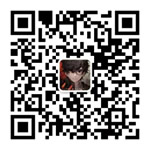Should I use machine translation? Alan K. Melby
Machine translation is somewhat like the child who, when good, was very nice to have around but who, when bad, was just awful. For some guidance in deciding whether machine translation is likely to succeed in your particular environment, please read on.
Contents
How is machine translation typically used? - o o Specifications o Quality What about the future? o o Cut Off a Piece - Figure 3 o o Which pen goes in the box? - Figure 5 o Which pen? - Figure 6 o Consider the Word "Bus" - Figure 7 o Different Cuts of Meet - Figure 8 o Light Shining In - Figure 9
What is machine translation?
People who need documents translated often ask themselves whether they could use a computer to do the job.
When a computer translates an entire document automatically and then presents it to a human, the process is called machine translation. When a human composes a translation, perhaps calling on a computer for
assistance in specific tasks such as looking up specialized words and expressions in a dictionary, the process is called human translation. There is a gray area between human and machine translation, in which the computer may retrieve whole sentences of previously translated text and make minor adjustments as needed. However, even in this gray area, each sentence was originally the result of either human translation or machine translation. We will reserve the label "machine translation" for the case when both the initial translation of the sentences and subsequent
manipulations are performed by a computer. All else we will call
"translator tools".
How is machine translation typically used?
Machine translation is highly appealing when its quality is acceptable for some purpose with little or no human revision. But slow down! Nine chances out of ten, machine translation will not work for you! I base that estimate on the fact that, currently, machine translation is used for less than ten percent of the publication quality translation produced worldwide each year. This figure is hard to measure, but few would claim that it is over ten percent. Why is this so? We will begin to answer this question by suggestion that for machine translation to be appropriate, it must be sitting on a stable "tripod".
The Translation Tripod
A translation project can be thought of as sitting on a tripod whose three legs are the source text, the specifications, and the terminology. If any of the three legs is removed, the project falls down.
1. Source text
Obviously, no translation can be done without a source text (i.e., the document to be translated). But for machine translation, an
additional basic requirement is that the source text be available in machine-readable form. That is, it must come on diskette or
cartridge or tape or by modem and end up as a text file on your disk.
A fax of the source text is not considered to be in machine-readable form, even if it is in a computer file. A fax in a computer file is only a graphical image of the text, and the computer does not know which dots compose the letter a or the letter b. Conversion of a source text on paper or in a graphical image file to
machine-readable form using imaged character recognition (ICR) is not usually accurate enough to be used without human editing, and human editing is expensive, adding an unacceptable cost component to the total cost of machine translation. Thus, for machine
translation to be appropriate, it is usually necessary to obtain the word processing or desktop publishing file from the
organization that created the source text. But this is only one of many requirements.
2. Specifications
All translations projects have specifications. The problem is that they are seldom written down. Specifications tell how the source text is to be translated. One specification that is always given is what language to translate into. But that is insufficient. Should the format of the target text (i.e., the translation) be the same as that of the source text or different? Who is the intended audience for the target text? Does the level of language need to be adjusted? In technical translation, perhaps the most important specification is what equivalents to use for technical terms. Are there other
target texts with which this translation should be consistent? What is the purpose of the translation? If the purpose is just to get a general idea of the content of the source text, then the
specifications would include "indicative translation only." An
indicative translation is usually for the benefit of one person
rather than for publication and need not be a high-quality
translation. Thus, publication-quality translations are
high-quality translations (and are usually the result of human
translation), while indicative translations are low-quality
translations (and are usually the result of machine translation).
These two types of translation are not normally in competition with
each other, since a requester of translation will typically want
one type or the other for a given document and a given set of
specifications. Sometimes, the two types are complementary, such
as when an indicative translation is used to decide whether or not
to request a high-quality translation of a particular document. In
this environment, an indicative translation may be requested for
a number of documents, and, using the indicative translations, the
requester may select one or two documents for publication quality
translation.
As previously mentioned, indicative translations are usually done
using machine translation and high-quality translations …… 此处隐藏:33084字,全部文档内容请下载后查看。喜欢就下载吧 ……
- 2000年8月份获卫生部批准的化妆品目录 2021-06-05
- 装饰装修公司的管理运营模式 2021-06-05
- 考研英语写作最常用词汇 2021-06-05
- 始得西山宴游记知识点梳理 2021-06-05
- 英语户外教学活动策划 2025-04-17
- 玩转鼓浪屿之最佳旅游路线 2021-06-11
- 微信淘宝条码实体店扫描体验:扫码如做贼 2025-04-18
- 2015届市一模(高三语文)质量分析(1) 2025-04-22
推荐阅读
3500个常用汉字表(注音版)带拼音
地质年代表(最新)
2017-2022年中国居家养老服务市场规划研究及未来潜力预测咨询报
初中英语阅读篇试讲
今日头条
每日精选
精彩图片
- 1、支付成功后,为何无法下载内容?付费后下载不了,请核对下微信账单信息,确保付费成功;已付费成功了还是下载不了,有可能是电脑的浏览器兼容性问题或者手机机型不支持的问题。
- 2、付费后能否更换浏览器或者清理浏览器缓存后进行下载操作?更换浏览器或者清理浏览器缓存会导致下载不成功,请不要更换浏览器和清理浏览器缓存。
- 3、如何联系客服?




